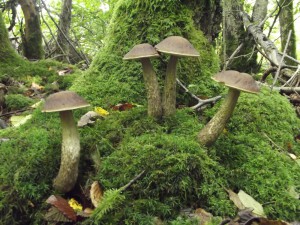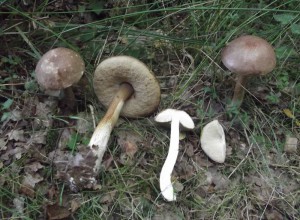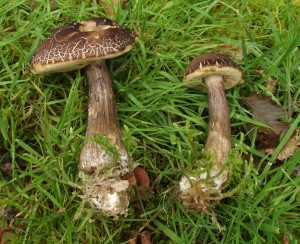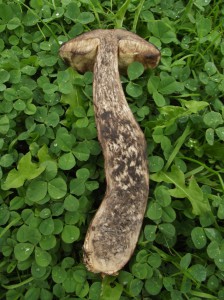Email: geoffdann@hotmail.com
Phone: 07964 569715
03/09/2015
Mushroom season is now well underway, at least in more open areas. I came across my first Penny Bun of the autumn today, as well as my first Fly Agaric. Plenty of other stuff is also just starting to appear. And one species in particular is going bonkers, at least in my corner of the south-east.
Every year is different for fungi – some species do well, others do poorly, and its usually not obvious why. This year, at least at this early point in the season, it is the turn of a mushroom
that’s normally rather scarce and very frequently misidentified by foragers, even though a big clue in the name ought to make it easier to get right.
One of the first edible species most mushroom foragers learn and go looking for is a rather squidgy and tasteless brown bolete called Leccinum scabrum – the Brown Birch Bolete. It is popular with beginners not because it is any sort of delicacy, but because it is widespread, common and completely impossible to confuse with anything poisonous. I haven’t seen any of
them at all so far this year, but I have seen a vast number of one of its relatives. There are several similar species, all of them brown-capped members of the same genus, and for many years I just called all of them “brown birch boletes” and paid little attention to the fact that not all of them were growing with birch trees (in fact, not even all of the brown Leccinums found under birch trees are actually L. scabrum, but let’s keep this simple…)
The species that’s going bonkers is called a Hazel Bolete (Leccinum pseudoscabrum), and it
grows under (you guessed it) Hazels, and also Hornbeam. It differs from the Brown Birch Bolete in two other obvious ways – firstly it has a cap that is noticeably dented or wrinkled when young, and eventually darkens and cracks. And secondly when you cut it open and expose the flesh to air it slowly turns brown, then dark purple, ending up almost black.
From a foraging point of view it’s not a delicacy either, although it is better than the Brown Birch Bolete when young and firm. Can be rescued with a bit of butter, garlic and parsley, and right now there’s so many of them about that you needn’t feel guilty about picking them for the pot.
Happy hunting and keep safe,
Geoff




